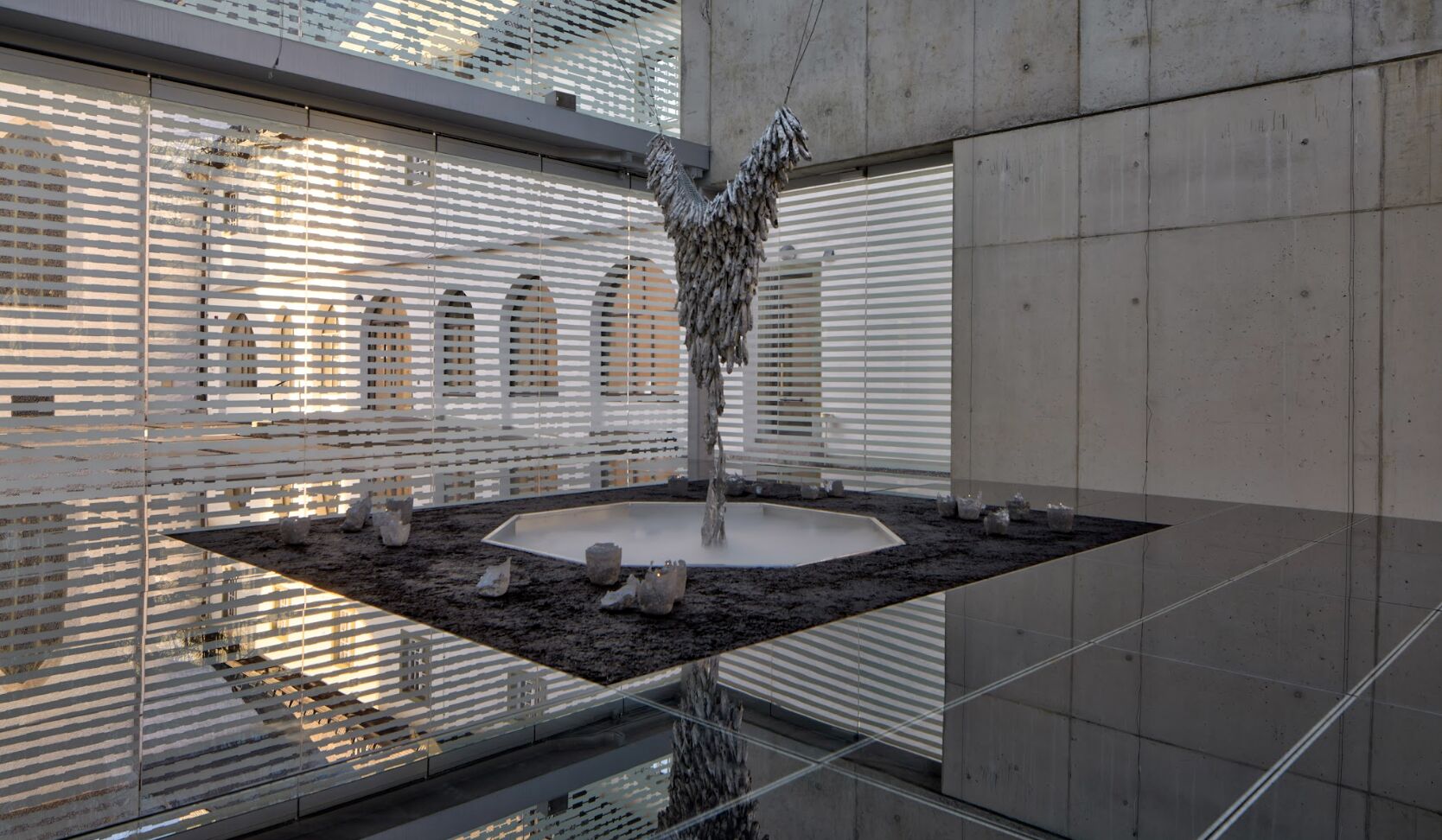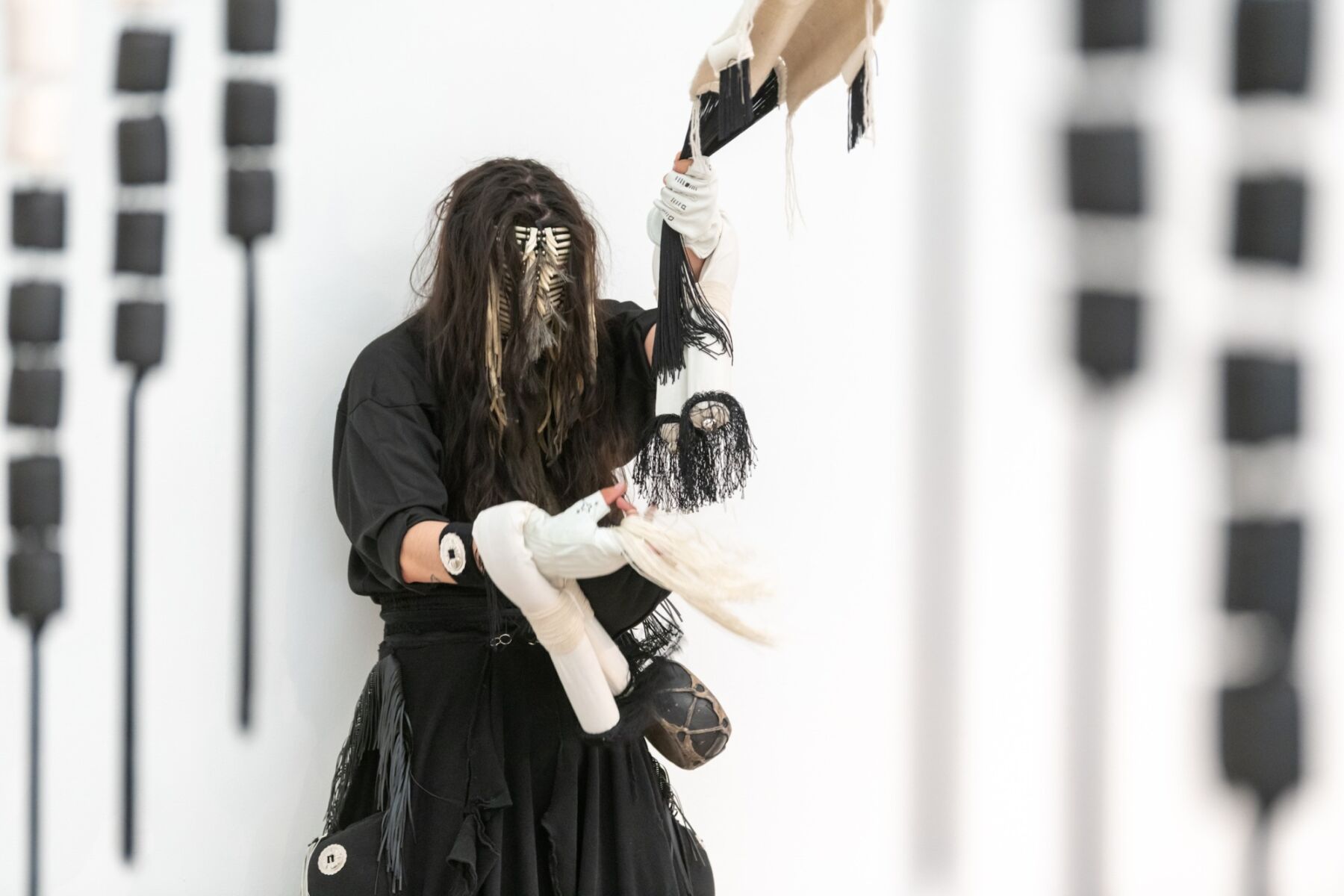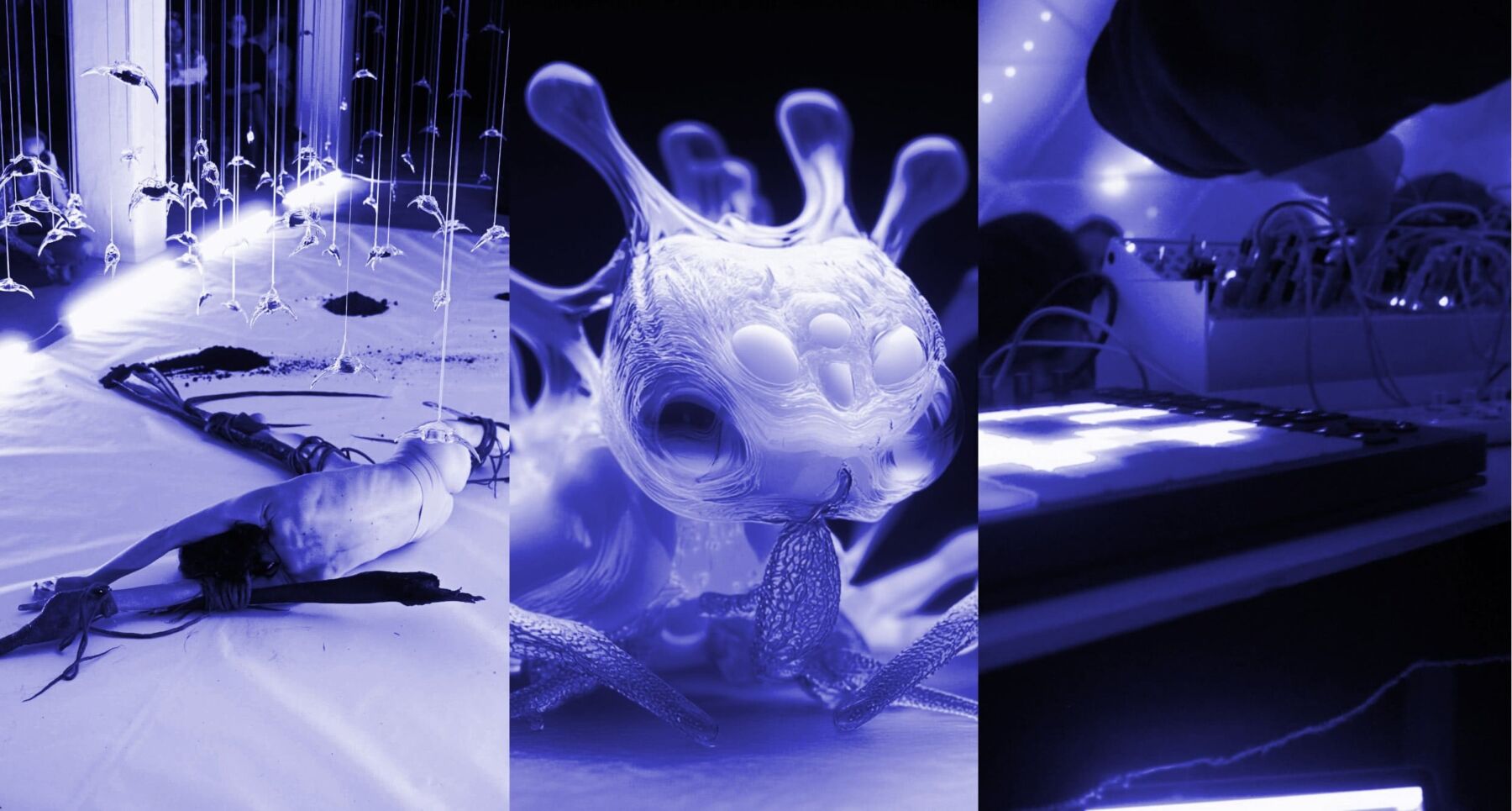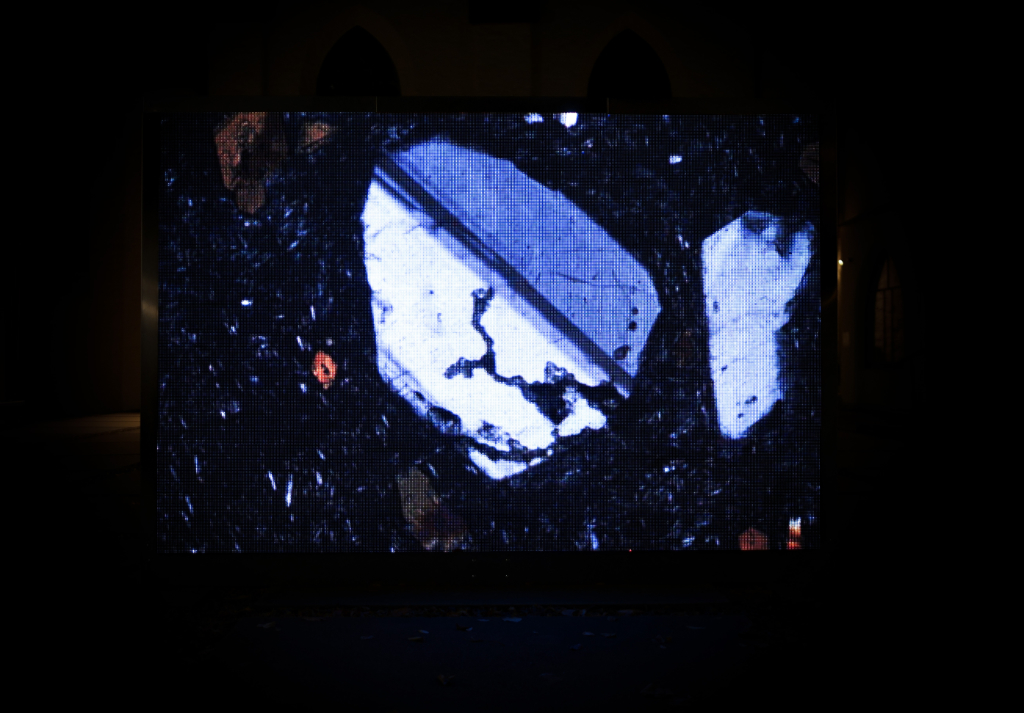Text by CLOT Magazine
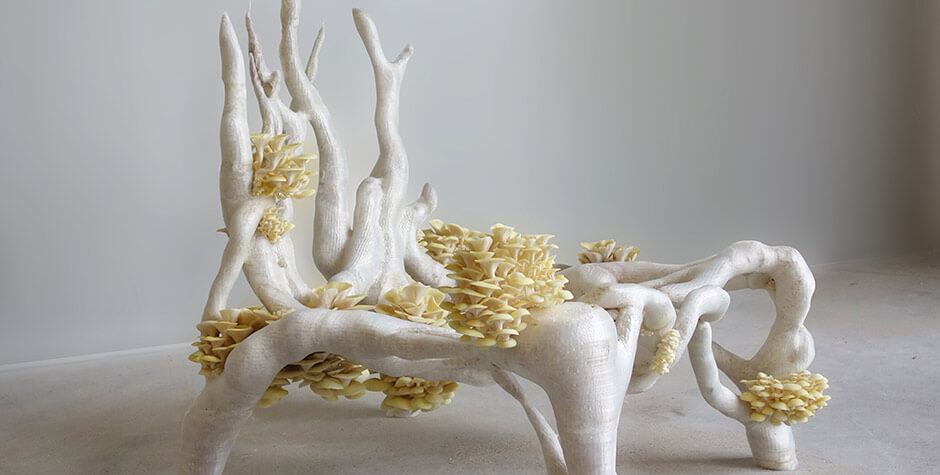
This week there’s a new exciting exhibition opening at Centre Pompidou in Paris. Always at the forefront of contemporary art, the French institution is bringing another instalment of the Mutations / Creations series, opening from February 20 to April 15, 2019.
Mutations / Creations is the centre’s annual creation and innovation laboratory exploring the ties between arts, science, engineering and innovation. It brings together artists, engineers, scientists and entrepreneurs who shape and infringe upon our present. The first edition in 2017 was devoted to design and manufacturing trends in 3D printing, while the second edition in 2018 explored the history of digital code and its artistic appropriation since the 1960s. This third edition examines ‘the living’ and its protocols of (re)creation.
At the crossroads between disciplinary fields, Mutations / Creations 3 summons up visual and digital art, design and speech through a group exhibition, La Fabrique du Vivant [The Fabric of the living], retracing the archaeology of the living and of artificial life. This group exhibition offers a prospective presentation of the recent work of some fifty designers and research from scientific laboratories. The exhibition has been organised in association with IRCAM.
La Fabrique du Vivant aims to showcase artists that question the links between the living and the artificial, as well as the processes of artificial recreation of life; the manipulation of chemical procedures on the living matter; self-generating works with ever-changing forms; hybrid works of organic matter and industrial material, or the hybridisation of human and plant cells. In this era of digital technologies, artists draw on the world of biology, developing new social and political environments based on the issue of ‘the living’.
Some one hundred projects will be showcased, including several created especially for the exhibition. The very matter of this exhibition is changing, as certain works undergo a process of growth or decay. IRCAM presents the Biotope installation by composer Jean-Luc Hervé, which fits into the exhibition tour like a living organism. Worth to mention that quite a few artists featured in this publication will be presenting their work. Maurizio Montalti, Amy Congdon, Spela Petrič and Elaine Whittaker are some of the names taking part.
We had a few words with the curators of this exhibition, Marie-Ange Brayer and Olivier Zeitoun, who gave us a fantastic walk through the exhibition inception, the challenges of the production and their expectations for it—an insightful read before checking this unmissable show.
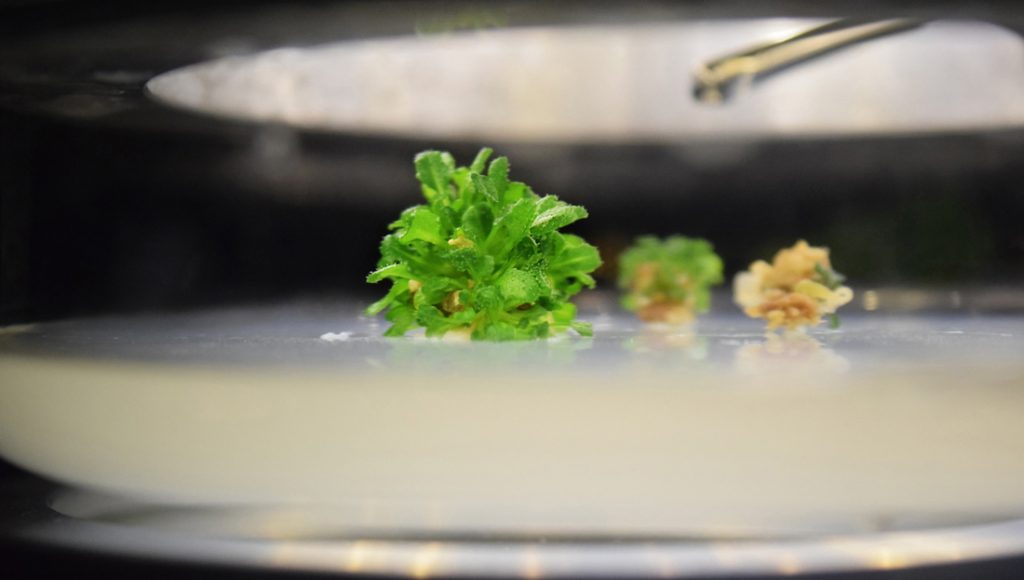
La Fabrique du Vivant is the 3rd instalment of the Creations/Mutations cycle (a cycle that explores the ties between arts, science, engineering and innovation). What are the main aims and intellectual process behind this 3rd iteration?
This series of
The ‘living’ spans the physical field of matter and the immateriality of the digital world. Biotechnologies are now a medium used both by artists, designers and architects. Digital simulation tools allow us to recreate the living.
Design takes a cross-disciplinary approach between biology and genetics, like a biotechnological artefact where living matter determines the form. Design now turns to ‘bio-manufacturing’ and new ‘disruptive technologies’ around living matter. Bio-materials made from organic life (fungus mycelium, laminar algae, bacteria and yeasts, etc.) have led to new sustainable, biodegradable objects. Artists question the links between the living and the artificial, as well as the processes of artificial recreation of life; the manipulation of chemical procedures on the living matter; self-generating works with ever-changing forms; hybrid works of organic matter and industrial material, or the hybridization of human and plant cells. In this era of digital technologies, artists draw on the world of biology, developing new social and political issues based on the living.
What were the main challenges you faced in its development?
This exhibition’s content will constantly change, as some works are involved in a process of growth or decay. To create an architectural environment specially designed for the exhibition (The Living, 2019), an architecture studio based in New York, The Living (David Benjamin) uses a new building method based on fungus mycelium bricks which grow and are assembled together by bio-welding. This transformation of micro-organisms into an architectural medium and building material has been led in a workshop organised in Paris with the design school ENSCI- Les Ateliers, a few weeks before the opening of La Fabrique du Vivant [Designing the Living].
The French XTU design and architecture agency also develops architectural projects using algae and recycling systems based on organic procedures. Algo Screen (2019) comprises three modules, including two photobioreactors (PBR), i.e. glass panels filled with water in which micro-algae are grown and intended to cover the facade of a building. The microalgae will develop during the show via photosynthesis, alive and absorbing the CO2 of the surrounding space. Specific lights will be displayed to keep the organisms alive, as our exhibition gallery has no natural light.
The Bionic Chandelier project (2018) by London-based designer and engineer Julian Melchiorri will purify the surrounding air in a process of recreating photosynthesis. Each of this lamp’s leaves is home to live micro-algae, micro-organisms which feed on carbon dioxide and reject oxygen to renew the air. The Dutch designer Teresa Van Dongen, who also studied biology, is designing new forms of energy by using the potential of bacteria. Electric Life is a system of lights equipped with a bacterial battery integrated in the design of the object. This project underlines a new relationship between the object and its user, as our staff will maintain the lamp “alive” by feeding the bacteria with
Several artworks will be evolving. The installation of Julian Charrière presents small architectures in bricks made of a mixture of plaster, fructose and lactose, moistened by water. These ‘living’ constructions are developing bacteria that change their appearance and structure in a slow decay process. The artist designed a new showcase for the exhibition that allows this ecosystem to proliferate without contaminating the exhibition space.
What do you expect from the audience interacting with La Fabrique du Vivant?
A new sound installation designed by the composer Jean-Luc Hervé, proposed by the IRCAM, Biotope, will interact in permanence with the movements of the visitors like a sound biotope. Here the music is like a living matter. Many works have been created for the show in laboratories thanks to a partnership with the Institut Pasteur. Many works have been created for the show in laboratories thanks to a partnership with the Institut Pasteur.
In a way, the audience will interact, facing an exhibition different each day! Allison Kudla’s Capacity for (Urban Eden, Human Error) (2010) is a 3D bio-printer attempting to transcribe urban spaces’ complexity physically. This machine will run during the show, and the plants will grow. The visitor will be able to discover new patterns and different forms each day as this growth process will be uninterrupted. Regenerative Reliquary (2016) by the artist Amy Karle is also an evolving sculpture in the shape of a human hand placed in a bioreactor. The structure was formed by 3D printing and sown with stem cells from a living donor.
In collaboration with Robert Foster, the Tissue Culture & Art Project by Oron Catts & Ionat Zurr develops projects at the crossroads of art and science. The artwork exhibited will present a polymeric structure in the shape of a human figure on which cellular lines cultivated in the lab will develop themselves, consuming their nutrients and producing waste, and finally, will die to transform this bio-reactor into a death chamber. With Habitaculos Organicos (2015), Mexican-born artist Gabriela Munguia presents a series of bio-organic micro-architectures that question how micro-organisms inhabit and transform an area. The work is an invitation to consider the urban space as a complex and dynamic biological organisation, spreading like a living organism.
Some of the artists in the exhibition (i.e. Oron Cats and Ionar Zurr) had pieces shown at MOMA’s memorable Design and the Elastic Mind (2008). Will the artists be presenting recent work, or will be more based on their trajectory and older pieces?
Most of the artists, designers and architects will present new productions specially created for the show. Some new pieces by Eric Klarenbeek or Pamela Rosenkranz will enter the Pompidou collection. The older pieces, like the Lamp Half Alive (2010) by Joris Laarman or GFP Bunny (2000) of Eduardo Kac, are linked with the timeline, which retraces the archaeology of the living and the artificial. (for art is like a living organism)… Better Death than Dying (2014-2019) by The Tissue Culture & Art Project, originally presented in 2014, has required a new recreation in the lab.
Metabodies (2013- 2019), a project created by artist Sonja Bäumel in association with scientist Manuel Selg, explores the human ecosystem by focusing on the language of the billions of bacteria that live in us. The installation has been adapted to our show. It presents three Petri dishes where two subjects left their handprints, accompanied by accelerated videos showing bacterial growth. This whole system has shown for the first time at Ars Electronica in Linz in 2013 and has been fully recreated for “La Fabrique du Vivant” [Designing the Living].
Artist, architect and designer Tokujin Yoshioka
Why is it relevant for a contemporary art institution Like the Centre Pompidou to portray art that focuses on science and technology?
The Centre Pompidou is a transdisciplinary institution, which is a unique place for experimentation and research between all artistic expressions. Mutations/Creations is an annual, forward-looking platform that opens a reflexive landscape in which art, innovation and science dialogue. It takes place in the continuity of the Centre de Création Industrielle (CCI), which, from the ’60 s up to the beginning of the ’90s, realised historical and prospective exhibitions on design and architecture, questioning industrial production.
Now digital technologies are the common substratum both for artists and scientists. Mutations/Créations is at the intersection of this issue, between art and



